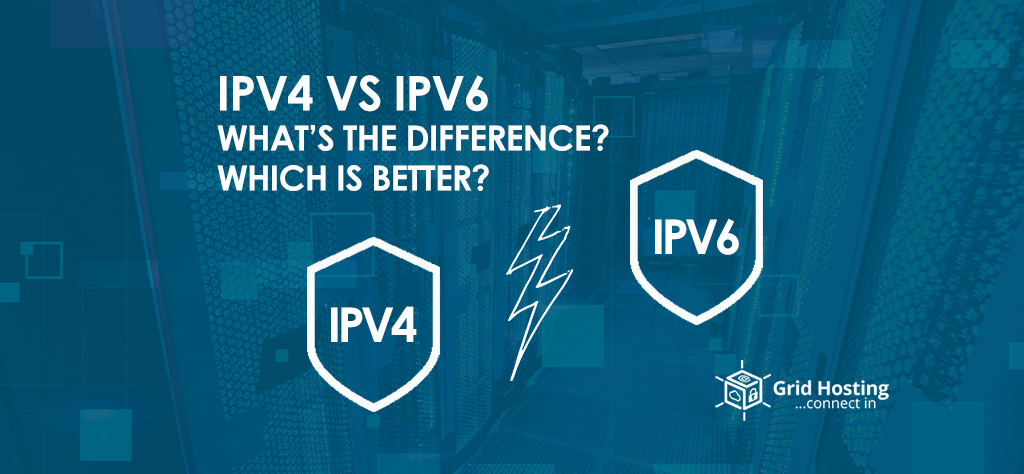IP refers to the internet protocol which is a set of rules which enable data packets to transfer across the internet and find their appropriate place. When you send information using a computer it breaks the info down into smaller parts known as packets. To make sure that data packets go on the right place every packet has an IP address.
Every domain on the internet contains an IP address that differentiates it from other available devices. An IP address with which you are also familiar is like this 32.253.431.177
Once the IP address is assigned to each device all the networks become capable to send data packets to their required locations.
This was all about the IP address and here we will also explore IPV4 vs IPV6 to help you understand which one is better than the other. Let’s start by knowing about IPV4 in detail
IPV4
IPV4 is the first version of internet protocol that is in use since 1980 and carried more than 90% of traffic back in 2021. It assigns 32-bit IP addresses to the devices and every address consists of 4 groups of numbers (8-bit sections called octets) which are separated by the time period like 192.158.1.37.
0 to 255 is the value of every single octet therefore, the IPV4 model contains every address between 0.0.0 and 255.255.255. These IPV4 addresses comprise of two parts
- The network ID (the first three octets) Demonstrates which network the device is on.
- The host ID (the fourth octet) recognizes the particular device on that network.
Let’s take an example to clear things
Suppose the IP address of your home network is 192.168.1.1 and the network id for the address is 192.168.1. Whereas, the final octet (1) is the host id. In all the networks the router gets 1 value by default. IPV4 allows the creation and use of multiple unique addresses. If we go back to 1980 it was observed that billions of IP addresses were enough to cater to the requirements of online users. However, there was also news that such a huge amount was not sufficient and there was a shortage of IP addresses.
Nowadays the world’s population is more than 7 billion and everyone is having two devices such as a laptop computer and a mobile phone. Here 4 billion IP addresses are not enough to meet the needs of users. Therefore, IT experts have to direct people into reusing the same IP addresses.
A common tactic for using the same IP address is network address translation often referred to as NAT. This allows you to use multiple devices through a single IP address which helps in preventing the bandwidth.
IPV6
IPV6 is another version of the internet protocol that saw the light after IPV4 and succeeded IPV6. It is designed to cope with the requirement of more IP addresses. There is also another name for IPV6 which is internet protocol next generation IPng. Contrary to the IPV4 it uses 128-bit IP addresses which enables more than 3 undecillions that is 340 with more than 30 zeros.
Usually, IPV6 addresses are longer than IPV4 and they are mostly alphanumeric. On the other hand, IPV4 depends on time periods when it comes to formatting. There are colons in IPV6 like 2001:0db8:0000:0001:0000: ff00:0032:7879
The above model forgets leading zeros similar to IPV4 and sometimes you see the IP addresses having a double colon which denotes any number of 0 bit. Although IPV6 is a wise option for the internet whereas, most users rely on IPV4. It Is because a network using IPV4 has to upgrade all his infrastructures which include routers and other devices while shifting to IPV6 which requires a huge time and cost as well. Moreover, there will be compatibility issues causing hurdles in switching.
In case you want to convert your IP to IPV6 while being functional then it will cause problems leading to a security risks, cyber-attacks, and potential data breaches. Therefore, a network should depend on IPV6 and it will become a norm in upcoming years.
Hope you have learned a lot about the IPVs and here we are going to explain their difference to let you know which one is better.
You May Also Like to Read: Top 10 Cyber Security Tips To Keep Small Business Websites Safe
Difference between IPV4 vs IPV6
An obvious difference between both IPVS is their formatting as IPV4 uses a 32-bit address while the other one uses a 128-address in comparison. Here the difference tells us that IPV6 offers 1000 times more addresses contrary to IPV4. A such huge amount can help in solving the problem of IP address shortages.
On the other hand, there are various technical differences between both Ips. However, there is no need to mention every one of them. Some noticeable differences are mentioned below.
- There is a built-in quality of Service in IPV6
- IPV6 has a built-in network security layer
- It allows end-to-end connectivity at the IP layer by eliminating the Network Address Translation (NAT)
- IPV6 is based on the latest technology and allows you to multi-tasking contrary to IPV4. This means it can enable the transfer of multiple data packets in a single operation.
- The packet headers are larger in IPV6
When It comes down to the total number of IP addresses IPV6 wins the race as it offers 1028 times more addresses than IPV4. Speaking of the differences there is a significant speed difference between both IPV4 and IPV6.
Speed is another indicator to see between both IPS and decide which one is the best. Although there is no big difference in their speeds IPV6 is a bit faster. In fact, there is evidence from which you can conclude that IPV6 is faster than IPV4. For example, a Facebook blog claimed we have seen an increase in speed while using IPV6. Whereas, there are different variables making it harder to do a speed comparison between IPV4 and IPV6. The main reason IPV6 is faster is that it does not waste any time on the Network Address translation allowing seamless connectivity. While the data packets of IPV6 are larger than IPV4 which might possibly slow down its speed.
Why IPV6 is a better option
As mentioned earlier the IPV4 is an older version that is in use since 1980. This means IPV6 is the latest one and more secure than IPV4. Below are some advantages of IPV6.
- Offers a huge amount of IP addresses to meet the increasing requirements of users
- Very simple router tasks because of the ending of IPV6 addresses which utilize a road map resembling to CIDR.
- Automatic configuration which helps in automating device numbering and IP assignment.
- Compatibility with mobile devices
- Efficient routing because of reduced routing table sizes
- A boast in speed because of huge payloads and enabling every single device to contain a public IP address
- End-to-end encryption and identity verification features
Above are the advantages for the IPV6 users however, there is a very low count of users of IPV6. According to the surveys, there are only 1% of users on IPV6 Despite such advantages. This means other users like IPV4 which is popular since its birth. Here these users have to bear a huge cost while switching.
Moreover, there are other problems you might face when moving from IPV4 other than transition-related problems. As there are some VPNs that are not compatible with the latest IP. Whereas, many systems and infrastructures struggle with IPV6 routing. Because of having huge packet headers IPV6 can slow down the overall uses which makes IPV4 a great option for millions of users over the internet. However, a promising reason because of why IPV6 gets an upper hand is the availability of Millions of IP addresses for the users. Such a benefit can urge a user to negotiate with a slightly slower speed of IPV6.
Here the tech experts are familiar with how to add some stunning features of IPV6 to IPV4. What everyone faces problems with is the creation of new IP addresses. This is the main cause IPV6 is a better choice as compared to IPV4.
For Special discounts and offers, visit our official Facebook Page.







